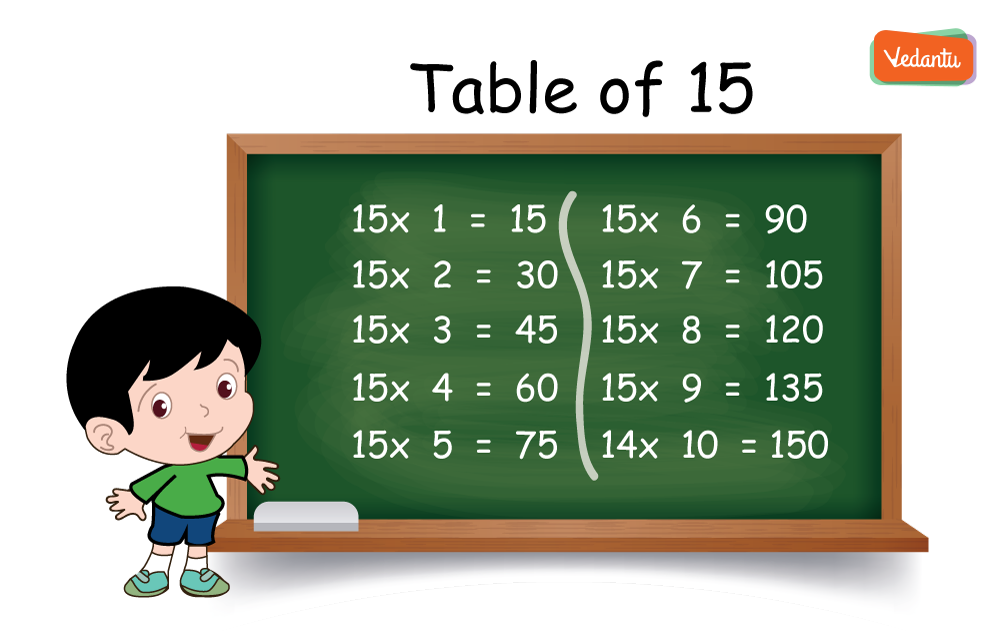How to Learn the 15 Times Table Fast and Effectively
FAQs on Table of 15: Multiplication Made Simple
1. What is the multiplication table of 15?
The multiplication table of 15, often called the 15 times table, is a list showing the results of multiplying 15 by whole numbers (1, 2, 3, and so on). It is built by using repeated addition of 15. For example, 15 x 1 = 15, 15 x 2 = 30, and 15 x 3 = 45.
2. How can I learn the 15 times table easily?
A simple trick to learn the 15 times table is by recognising its unique pattern. There are two key things to notice:
- The last digit of each multiple always alternates between 5 and 0 (e.g., 15, 30, 45, 60...).
- The digits in the tens place follow a 'two odd, two even' sequence. For example, for 15 and 30, the tens digits are 1 and 3 (odd). For 45 and 60, they are 4 and 6 (even). This pattern continues, making it easier to memorise.
3. Why do all multiples in the 15 times table end in either 0 or 5?
This happens because 15 itself is a multiple of 5 (15 = 3 x 5). A fundamental rule in math is that any whole number multiplied by 5 will result in a product ending in either 0 or 5. Since every number in the 15 times table is also a multiple of 5, they all must follow this rule. The product ends in 0 when 15 is multiplied by an even number and in 5 when multiplied by an odd number.
4. What is a practical, real-world example of using the 15 times table?
A common real-world use of the 15 times table is for calculating time. There are 60 minutes in an hour, and since 15 x 4 = 60, the 15-minute mark is a quarter of an hour. If a student practises maths for 15 minutes every day for 6 days, they can quickly calculate the total time using the table: 15 x 6 = 90 minutes, which is one and a half hours.
5. How is the table of 15 connected to the tables of 10 and 5?
The table of 15 is directly related to the tables of 10 and 5 because 10 + 5 = 15. You can find any multiple of 15 by simply adding the corresponding multiples from the 10 and 5 times tables. For example, to find 15 x 3, you can calculate (10 x 3) + (5 x 3), which is 30 + 15 = 45. This method helps break down multiplication into simpler, more familiar steps.
6. What are the first 10 multiples in the table of 15?
The first ten multiples in the multiplication table of 15, as per the CBSE/NCERT curriculum for 2025-26, are:
- 15 x 1 = 15
- 15 x 2 = 30
- 15 x 3 = 45
- 15 x 4 = 60
- 15 x 5 = 75
- 15 x 6 = 90
- 15 x 7 = 105
- 15 x 8 = 120
- 15 x 9 = 135
- 15 x 10 = 150
7. Is 15 a prime or a composite number, and why does it matter?
The number 15 is a composite number. A number is composite if it has more than two factors (i.e., factors other than 1 and itself). The factors of 15 are 1, 3, 5, and 15. Understanding this is important because it shows that the table of 15 is built upon the tables of its factors (3 and 5), helping you to check your calculations and see connections between different multiplication tables.
















